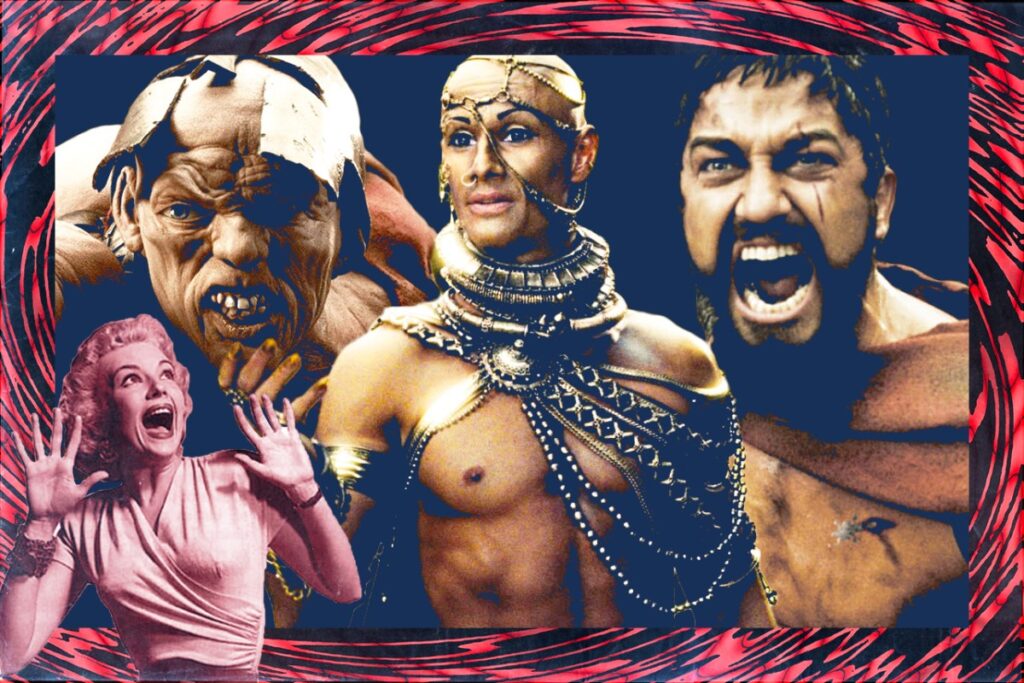There was a sweet Australian comedy in 1987 titled my year broken. When I thought of my first glance about the “historical” action drama which was directed at Zack-Snyder 300 back in 2006, I now realized that it was my brain year broke. For the first time, at least.
Snyder doesn’t seem too much threat to the cinema – or culture – at that time. In 2004, his dawn had come out. Technically it is advanced but not at all necessary (at least as far as I was worried) the filmmaking film was still related and still a 1984 goat by George A. Romero, it was only one of those things, I thought. Rehash to feed MAW content. Unpleasant, but it doesn’t have to disaster.
For my broken brain, 300 – who was first released in theaters 15 years ago – is something else again. These turgid, excessive, racist with relaxed, diligent homophobics, disoginist-per-implications, and eugenisis-per-implications of whoematic sinematic pillows, adapted from graphic novels by Frank Miller (a talented clerk who has implemented his Lurid. Sensibility to give Actual fascism that was difficult to sell because the script for Robocop 2 of 1990) was praised into the sky as a kind of breakout visionary work. At least that’s how it feels. (Even though the Rotten 61% tomato ranks made a slightly different case.) In any case, I was beside myself.
You know the arrangement: Gerard Butler’s King Leonidas, the Spartan ruler, chose to take extraordinary troops from Persia Effete despite being defeated apocally. (Butler’s performance in the classic mode Richard Harris on the Pro Forma is the most pro: “speak gently and then shouting something” strategy reading lines.) So it leonidas’ 300 guys (hence the title) versus a lot and many more Persia.
To make them probably have become certain havoc, worse, this noble soldier is subject to betrayal by Spartan – he is defective, a type of Gollumesque, and cannot afford in battle. Denied because of the task by Leonidas, he changed the traitor. The lesson here is that disabled people are really better offered to die on the top of the mountain where the most true and most noble Spartans are forged since the baby. (Funny how the idea of Frank Miller about the ideal community is one where the creative type is confused, bending-to-horses may not be suitable.)
And of course Spartan (spoiler warnings) die. With blood, but also very noble. Because these people are all torn; Temptating their meat as they go to their compensation practical sacramental. It’s better to die heteronormative-with-homoerotic-implications (“Do you like movies about gladiators?”), From, you know, Persia.
I remember the first glance I was rather surprised, first in the formal department. Snyder and Larry Fong Cinematografer seemed to have shot all the films through Dung-Tinted filters. I took Great Glee, when arguing (or did it argue?) With people about pictures, saying it really looked like garbage. When viewing the film today, I realized that I was unfair: Snyder and Fong also shot through the Gray-Green filter at times. And the Topless Interpretive Nubet Dance from Oracle was shot through a charcoal blue filter. Etc. To be entirely honest, as long as I saw my last time (and they were mostly when I could fully enhance narratives and dialogue) where I enjoyed the Faux expressionist visual style here. The opening scene with a skull hole and threatened Cecil B. Demille suggested that at some level the film it was actually something that was rather me. But not. Not really.
One of the most famous film scenes is relatively early: Persian Messenger, someone is decorated with an interesting number of facial jewelry (this is a picture where you can tell the bad people with their nose rings) Arrogantly approaching Leonidas and notifying requests Persian leader Xerxes for “submission” in the form of “earth and water.” Leonidas balk is not only not only; The rat, played by Lena Headey, placed two names, and redeemed by Messenger Haughty. So, because of the problem, the envoy was kicked with a well by Leonidas, like his men with lust. One can see this as the first shot across the bow in the film whose main statement is that white supremacy deserves to insist on the suicide point. But it might be too charming. What Snyder has to offer here, obviously, is equivalent to the pleasure experienced by Lynching actors, “I showed that such conformity and so-so”. And no, here I don’t think I made a lot that was too big. It’s on the screen.
When Leonidas met the commander who would conquer him in battle, he saw Xerxes up and down, slightly tasting on his metal jewelry, and said, “Let me guess. You have to xerxes,” as if overcoming the eunuch. Look at this dude eyeliner, Snyder cinematic language tells us. The whole dynamic is strange schizoid when you go down there. Defeminacy is associated with weakness, but, of course, the nobles, torn who are destined to fight Persian’s sissy with nose rings and self-satisfaction and everything. But in the end, 300 Inders that this declining culture victory was unsustainable.
When we move to the bone-crunching resolution, dialogue interspersed with a platitude like “freedom is not free at all. And it comes at the highest cost. The cost of blood.” Not to mention the exchange like “first, you fight with your head.” “Then, you fight with your heart.” Is it right? Is it right. And Narator David Wenham (he played the Dikios role) told the philosophy and exposition in the Aussie tone which was plummy and macho.

